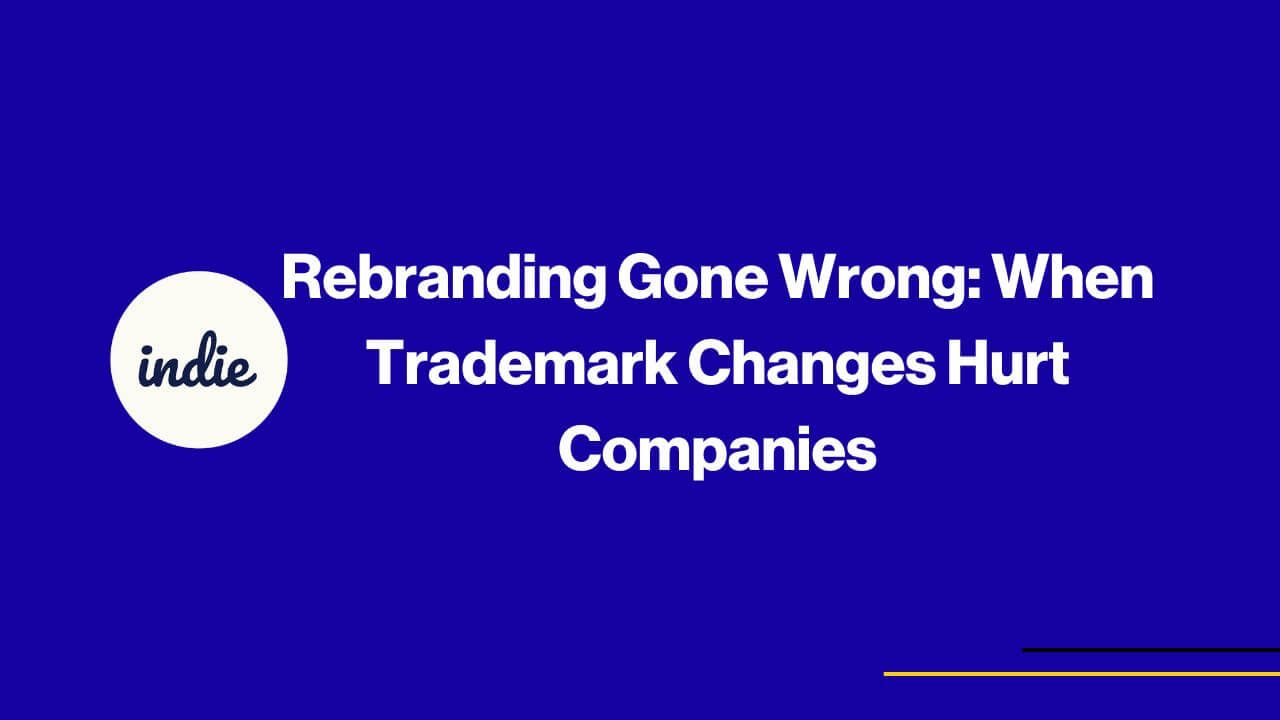In this blog, we’ll explore:
- Case studies of rebrands that led to legal battles or customer loss
- How to legally transition a brand without trademark conflicts
- Lessons from companies that successfully rebranded
Rebrands That Led to Legal Battles or Customer Loss
Many companies have changed their names, logos, or brand identities, only to face unexpected trademark disputes or public backlash. Here are some of the most notable rebranding failures.
1. The Gap Logo Disaster (2010)
In 2010, Gap attempted to modernize its logo by replacing the original blue square with a serif font with a more minimalist design.
The Problem:
- Customers reacted negatively, flooding social media with complaints.
- The new logo felt generic, making it harder for customers to recognize the brand.
- After only six days, Gap reverted to its original logo—costing the company millions in design, marketing, and damage control.
Lesson: If your brand has strong recognition, don’t make drastic changes without testing consumer reactions first.
2. Tropicana Packaging Change (2009)
Tropicana redesigned its packaging to look sleeker and more modern, changing its iconic orange with a straw in it to a simple glass of juice.
The Problem:
- Customers couldn’t recognize the product on store shelves.
- The rebrand resulted in a 20% drop in sales—a loss of $30 million in just two months.
- Tropicana had to revert to its original design after the backlash.
Lesson: Visual trademarks like logos and packaging are key brand identifiers. A drastic change can lead to customer confusion and lost revenue.
3. Facebook Transition to Meta (2021)
Facebook rebranded to Meta to reflect its shift toward the metaverse. However, the transition wasn’t smooth.
The Problem:
- The company failed to secure the “Meta” trademark in advance.
- A company called Meta PC had already applied for the trademark, creating legal issues.
- Facebook eventually settled with Meta PC for an undisclosed amount, likely costing millions.
Lesson: Always conduct a trademark search and secure the rights to your new name before launching a rebrand.
Read more: First Use vs. First to File – Who Owns a Trademark?.
How to Legally Transition a Brand Without Trademark Conflicts
If you’re considering a rebrand, follow these legal best practices to protect your trademark rights and business reputation.
1. Conduct a Trademark Search Before Rebranding
Before choosing a new name or logo, perform a comprehensive trademark search to make sure it’s not already registered by another business.
Where to search:
- USPTO (United States Patent and Trademark Office) for U.S. trademarks
- WIPO (World Intellectual Property Organization) for international trademarks
- Social media and domain availability to prevent branding conflicts
Learn more: Trademark Basics: Everything You Need to Know.
2. File for Trademark Protection Early
Once you choose a new brand name, file a trademark application immediately. This prevents competitors from registering it before you do.
What to trademark:
- Brand name
- Logo
- Slogan
- Packaging design (if distinct) 
Learn more: What Should I Trademark First?
3. Transition Gradually to Avoid Customer Confusion
A sudden brand change can lead to customer backlash. Instead, phase in new elements over time:
- Start with a teaser campaign explaining why the change is happening.
- Use a transition period where old and new logos/names appear together.
- Update trademarks, website, and social media gradually to maintain recognition.
4. Secure Your Digital and Social Media Assets
Before announcing your rebrand, make sure you:
- Buy the domain name for your new brand.
- Claim the social media handles (Instagram, Twitter, LinkedIn, etc.).
- Update email addresses, trademarks, and copyrights to reflect the new identity.
Lessons from Companies That Successfully Rebranded
While some rebrands fail, others have been major successes. Here’s what they did right.
1. Dunkin (Dropping “Donuts” in 2018)
Dunkin’ Donuts simplified its name to Dunkin’ to reflect its expanded menu beyond just donuts.
Why it worked:
- The logo remained recognizable, keeping brand trust.
- The company tested the change with customers before launching.
- The trademark was already protected, avoiding legal issues.
2. Apple (From Apple Computer to Apple Inc.)
Apple removed “Computer” from its name in 2007 to signal its expansion into phones, tablets, and wearables.
Why it worked:
- The change was small but significant, keeping brand recognition intact.
- Apple had already filed trademarks for other product categories, preventing legal conflicts.
Read more: Should You Trademark Your Company Name or a Product Name?.
3. Old Spice (Rebranding to Appeal to a Younger Audience)
Old Spice transformed from a brand associated with older men to one that resonated with younger demographics.
Why it worked:
- They kept the iconic logo but refreshed their marketing.
- The brand owned its trademarks, so no legal conflicts arose.
Thinking About Rebranding? Protect Your Trademark with Sleight Law
Rebranding can refresh your business, but if done incorrectly, it can lead to lost customers, legal disputes, and financial losses.
At Sleight Law, we help businesses legally transition their brand while protecting their trademarks. Whether you’re changing a logo, updating a name, or launching a new brand identity, we’ll guide you through the legal process to ensure a smooth transition.

